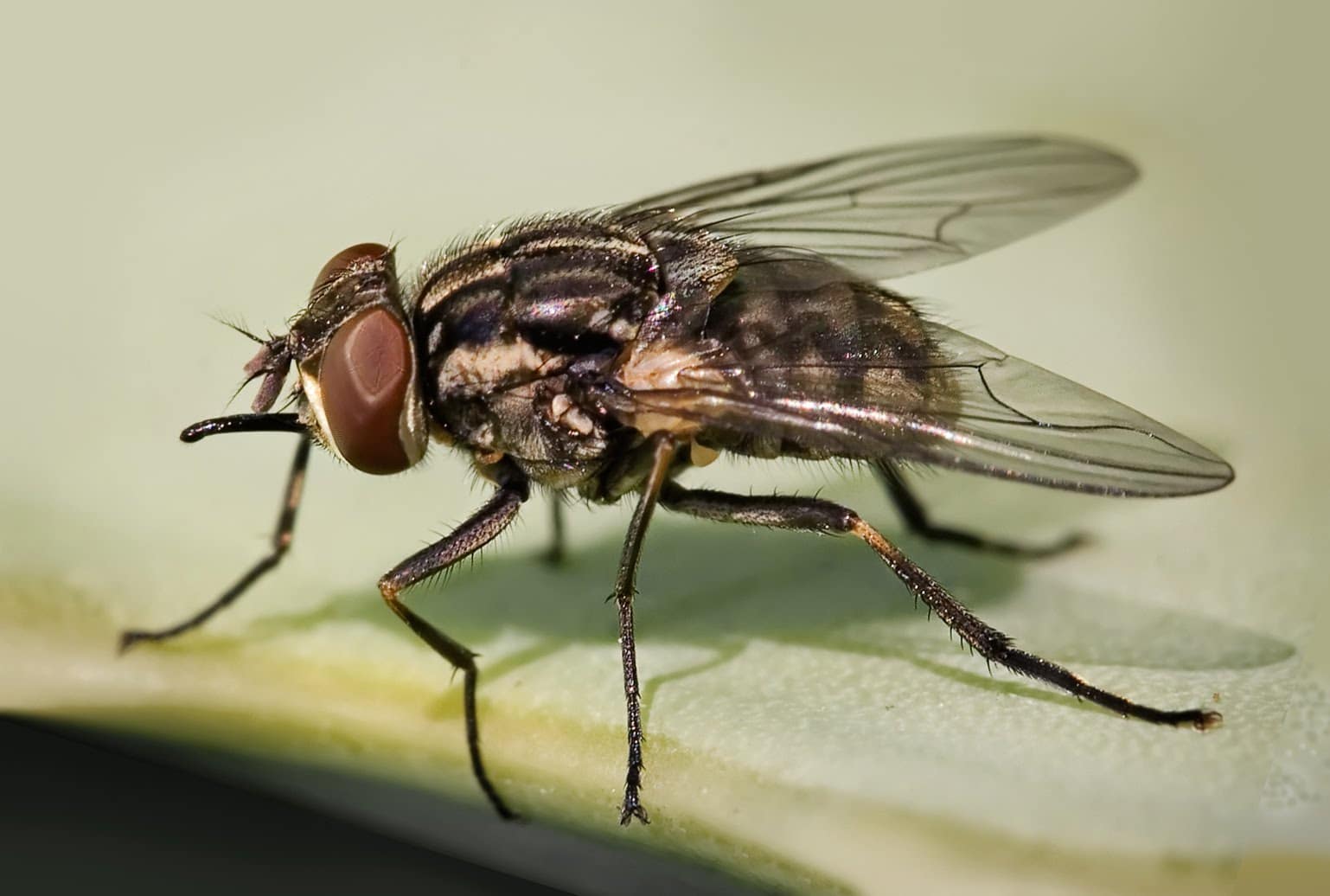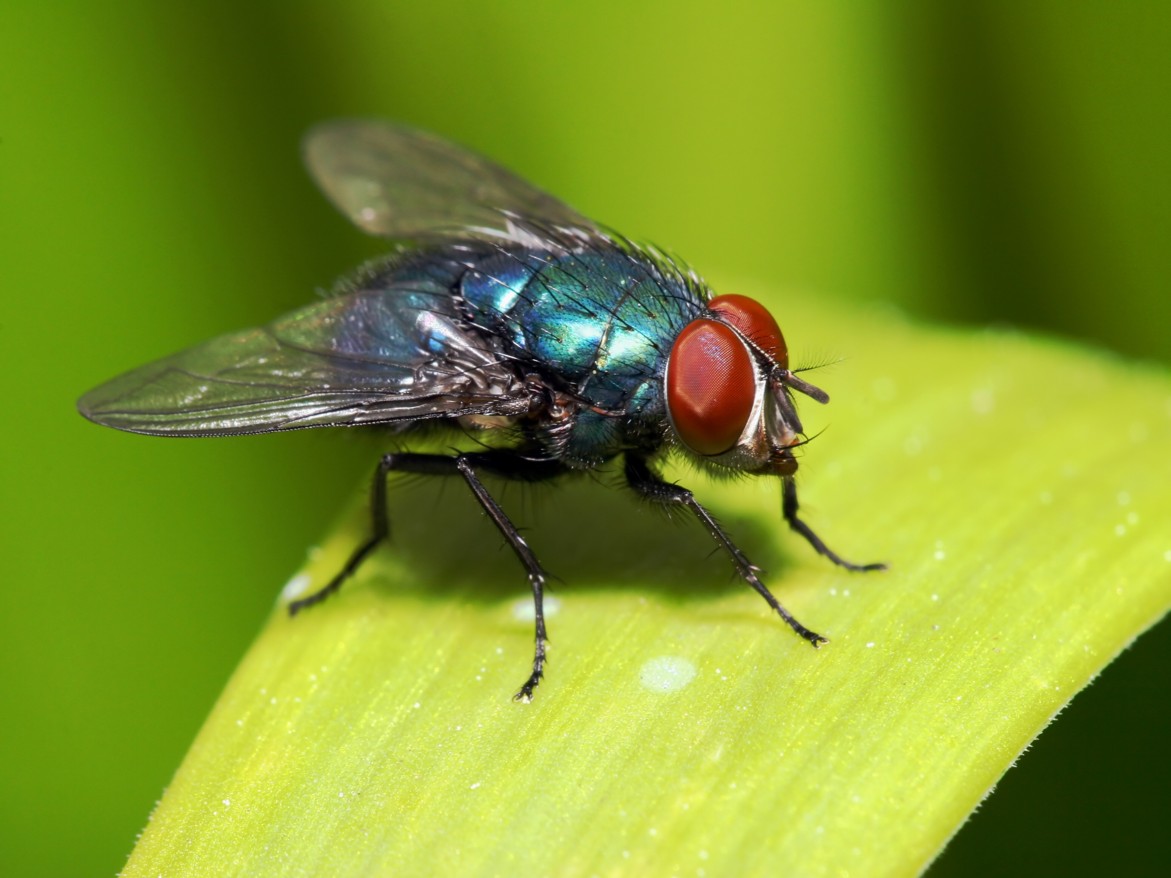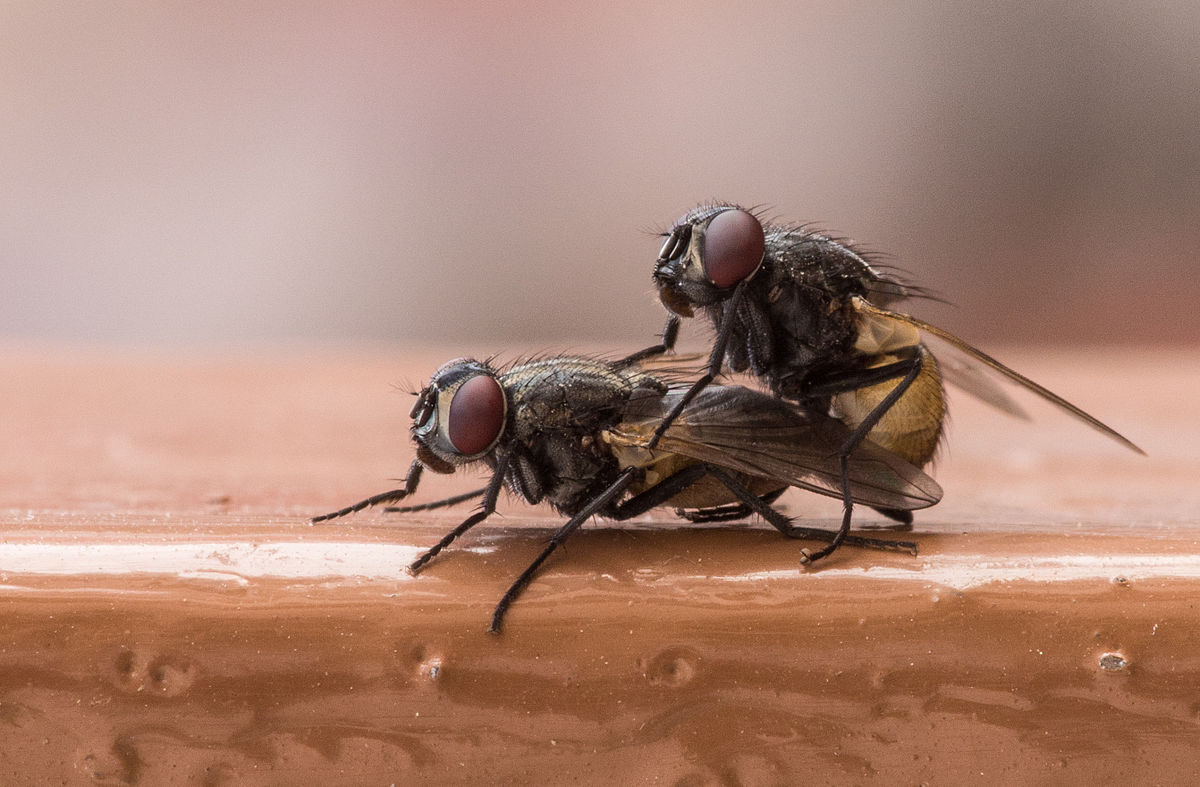The life cycle is very variable in different species of animals, sometimes it can be hours and other times months. In this article we are going to explain about the life cycle of the fly. This life cycle will depend on its gender, but especially if it is in captivity or in the wild. That is why we invite you to continue reading the following article so that you know these interesting facts.

Fly Life Cycle
The life of many species is limited by a certain time, this tends to vary according to their species. This lifetime can last for hours, days, months, or perhaps years. But when it comes to the life cycle of the fly, it is very difficult to know for sure. Since in freedom according to various studies it is estimated that the life cycle of the fly goes between 25 to 52 days as an adult. But this can change when they are in captivity, since some of them have managed to reach eleven weeks. But one thing that never changes is that the males are going to live for much less time than the females.
On the other hand, in 2008 there was a news story in which, according to several researchers from a certain Swiss laboratory, they stated that due to an increase in the brain activity of flies, it caused the life cycle of flies to decrease. That is, they lived much less than stipulated. These scientists were two professors who belonged to the department of ecology and evolution at the University of Lausanne, West. These researchers are named Tadeusz Kawecki and Joep Burger, who had discovered a negative correlation when they studied their advances in their flies' learning abilities and their longevity.
By this we mean, in short, the most intelligent flies lived much less. The scientists who published the results of this study in a well-known journal called Evolution took it upon themselves to divide the fly population numbers for study into two groups. One of these groups remained in their natural state, while the other group began to improve their learning abilities. The researchers taught this group to identify a food odor with a taste, whether pleasant or not, and to relate a lab-created aroma to a precise odor.
This was carried out for several generations and after 30 to 40 generations later. The scientists got the flies to develop better learning skills and even managed to memorize for much longer. However, despite all these studies, it was shown that the group of flies that were in their natural state had a much longer life cycle than those that were much more intelligent. So the life cycle of flies was determined above all by their freedom. The result of this research was that the more intelligent the fly became, the shorter it lived.
The scientists affirmed and concluded that the aging of the flies was accelerated by a much more developed neural activity. So this produced wear, which would explain the fact that the flies did not fully develop their neuronal capacities. The latter was highlighted in his research, this is due to the fact that the brain spends 20% to 25% of the energy of all living beings and it is understandable that those animals lucky enough to have a less consumed brain live long. more time.
https://www.youtube.com/watch?v=l5r-2uDSu4I
Therefore, the fly is a terrestrial insect, with a great impact on the environment, which belongs to the class of insects and to the Diptera order. For this reason, the most common is that which belongs to the Muscidae family, which is distributed in the vast majority of the world's regions. As for its scientific name, Musca domestica, it is characterized by having 4 dark stripes on the back of its thorax. Its abdomen is light in color on both sides and has a central dark band over the abdominal parts.
Characteristics of the Flies
The fly is characterized by a body made up of three parts, which are the head, the thorax and the abdomen. His eyes have a red color, which are made up of thousands of facets that will be sensitive to light. Despite the fact that they continually wipe their eyes with the rubbing of their paws. His eyes, or his visual organ, will lack a central lens, due to those facets or receptive units, they will allow him to show all the movements that occur around him instantly.
As for the head of the flies, it contains all the mouthparts, these will allow you to use them to lick, suck, pierce or bite. And there are even some species of flies that will have the ability to bite and suck blood from humans. These flies are also characterized by having wings that will allow them to fly. But it also has other much smaller ones, of a smaller size that will take the name seesaws or halteres, these small wings will have the function of stabilizing their movement.
Apart from what has already been explained, the fly is covered by hair and multiple numbers of sensory silks, which will allow it to taste, feel and smell. The behavior of the flies is that they always savor everything they step on and if this is to their liking, that is, it seems delicious, they lower their mouths and try it again. This behavior is extremely typical in them and they use it to locate their meals. They also help each other with their legs, which allow them to move smoothly.
This is due to the fact that their legs have a kind of small adherent pillows that will allow them the ability to walk on surfaces that are very smooth like glass. The flies when they are already in an adult stage have a size between 5 and 8 millimeters in length and an approximate wingspan of 13 and 15 millimeters. Another important fact is that females are much larger than males, in terms of their eyes, females have a greater distance between their two eyes than males.
Habitat and Food
The fly flies and abounds in the vast majority of places where there is or is human presence, regardless of the climate. And even this species of animal are the ones that adapt to most temperatures on the planet. Flies are attracted to places that stink of fish and meat, since it feeds on waste. Because of this, they can be found where there is food, garbage and waste. But flies will not only feed on waste, but also feces, decomposed fruit, that is, any type of waste.
This species of animal, apart from being very annoying in our homes, is also extremely dangerous for our health. Since these have pathogens that can cause serious diseases in humans, this is why special care must be taken with the food that they can contaminate. The flies when eating do not chew, but they will absorb and regurgitate the fluids of these. Another important characteristic is that they carry bacteria in their bodies, which is why this animal species is very dangerous to health. Since for human beings this can be very harmful and even leads to other diseases.
how they eat
House flies use their digestive juices to eat. This liquid is vomited by the flies onto their solid food. This will allow them to dissolve their food into small pieces that will then allow their mouth to take their food. According to various studies, this feeding process was given the name "proboscis".
They can taste with their paws
Just like the other insect, this time butterflies, flies can taste food using their tiny legs. This is largely due to the fact that flies have a very peculiar characteristic. Which is located in the last sections of its small legs. This characteristic is that it has taste buds, which is why when a fly lands on a delicious dish, which can be animal feces, it may even be your dinner plate. This is why the behavior they have before eating any food. They fly and perch on everything to see what seems best to him and what provokes him at that moment.
The Reproduction of Flies
Insects are going to present complete metamorphosis, by this we mean, the preimaginal stages are very variable when they are in the adult stage. The biological period passes, however, there are a few exceptions. These are going to be seen through 4 well-defined stages as they are; the egg, the larva, pupa and adult. It is in this where the generally winged Diptera are presented. All this is then linked to these 4 stages mentioned.
Regarding the fertilization of the eggs and the resistance of the larvae, they are closely linked to a certain temperature. When we talk about temperature we refer to heat, which can speed up the situation. But this has a rebound effect since if the heat increases, production can decrease. Nor, according to the studies they have carried out, the night and day temperatures are not going to have an impact on them. Since there should not be much difference between these.
Another result that the research showed is that houseflies become sterile when in contact with temperatures of 30°C. In terms of fertility, it is much higher than expected from insects. But another point of relevance is that depending on the species the number of eggs tends to vary. An example of this is the hypoboscoids who will only reproduce a single larva. As for other Diptera, they will only lay between 6 to 8 eggs, while in other species they can count from several to thousands. As explained, everything will depend on the different types of species.
When talking about flies, a female can fertilize up to 2000 eggs, in several groups of between 100 and 150. With this, it can be concluded that if a female leaves a minimum of 100 eggs in each laying . If this happens in a very short period she could reach as many successors as the number of men living on earth. This is taken to 7.000.000.000, if it were the case that their mortality did not exist, but the vast majority die in their larval stage. Or even after having passed this stage their numbers decrease considerably since they are easy prey for their infinite predators.
Continuing with the life cycle of the flies, these insects will come out of the eggs in the form of larvae in a period of 24 hours or they can even come out after 12 hours if the temperatures are high. The larvae, which in this case of the flies are going to be called maggots, are going to dedicate themselves to tasting the rotten food. It must be taken into account that the maggots will never be able to be observed, since they remain below the surface of the substrate that the adult fly has selected to lay its eggs.
If these are placed in the open, they will immediately go directly inside. This is thanks to the powerful muscular contractions, this can happen because they may either abhor light or to immediately escape from predators by nature, such as birds, for which they symbolize delicious and nutritious morsels. This is why their population decreases at this stage since they are easy prey for their counterpart.
On the other hand, they will require much more heat and humidity, so they will dry out in a very short period of time if they are exposed to air. In the vast majority of insects, it is the larvae that will gather most of the food that they will require. This is not only going to be to preserve their own life, but they also do it for the nymphal construction. The latter is what will give rise to adults, whose purpose is to reproduce. Everything explained is part of the life cycle of the fly.
After this, about 6 days will pass where it is here that they finish growing, where they can manage to increase 800 times their body size. After going through this stage, its outer skin will become much more solid, to the point of solidifying, thus transforming into a brown kite. Which will be elongated and rounded, which will house the pupa inside. This kite-shaped feature will take the puparium as its name. Once a period of time has passed, approximately one week is calculated, the pupa transforms into an adult fly.
This fly transforms from the kite that was where it was locked up. This is the same behavior that the chick has or passes when it must break the egg shell. Both present the same problem, which is that by itself they must break their "envelope" in order to come out already transformed. But what differentiates them is that, instead of the beak, in the case of birds, they will have an important and special instrument for this occasion, such as the putilino. Which will be characterized in a kind of vesicle located on the forehead of these. Between your eyes, which will act as a kind of hydraulic press.
All this, which we have already explained, belongs to the life cycle of the fly. But this is not all, there is another phase that occurs when the fly rhythmically contracts its body, causing the blood to flow inside the vesicle. This will swell causing it to press very hard on the anterior pole of the puparium. Once the force exerted in this place, it proceeds to break along its entire length in a circular manner, causing it to rise like a lid. This is why they name this select group cyclorraphics. After a period of 3 days has elapsed since the puparium has broken, it begins to lay eggs. Giving in this way the beginning, again, of the life cycle of the fly.
If you were interested in this topic about the Life Cycle of the Fly, I also invite you to continue reading the following articles about the entire animal kingdom and the species that comprise it:


